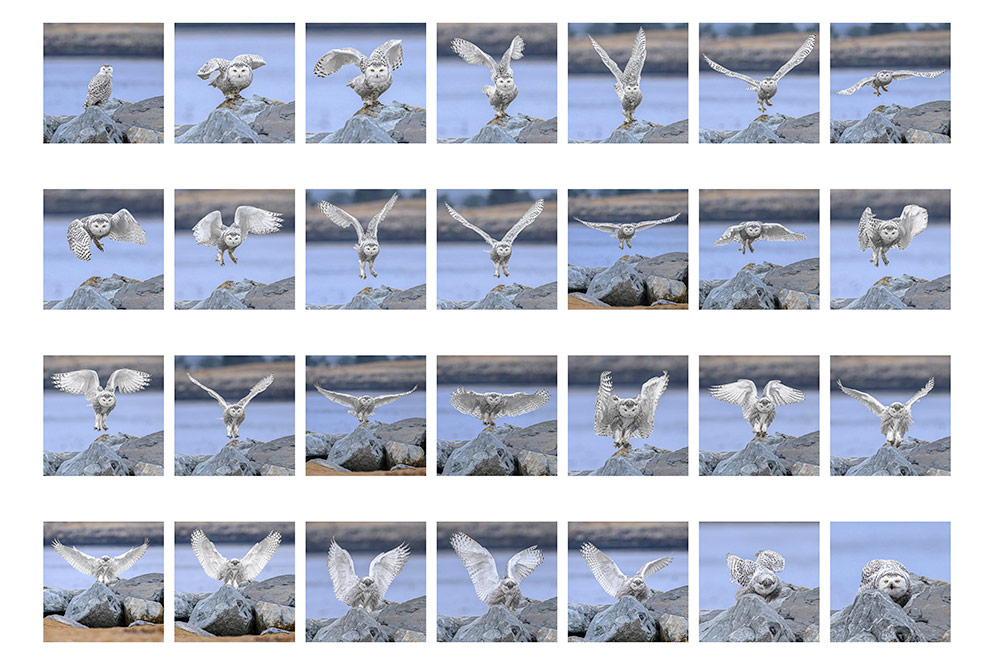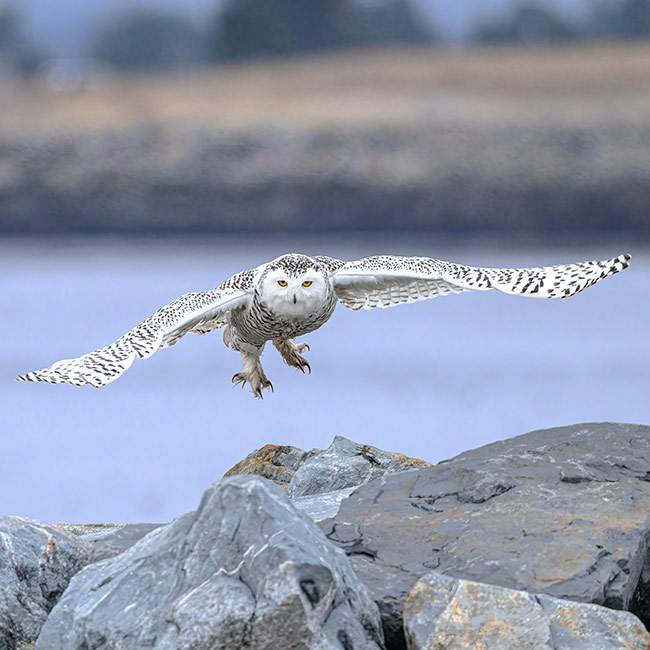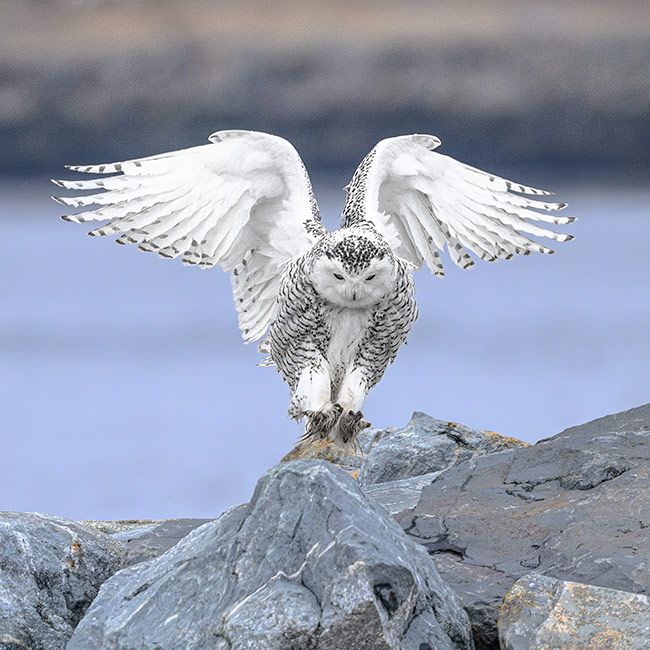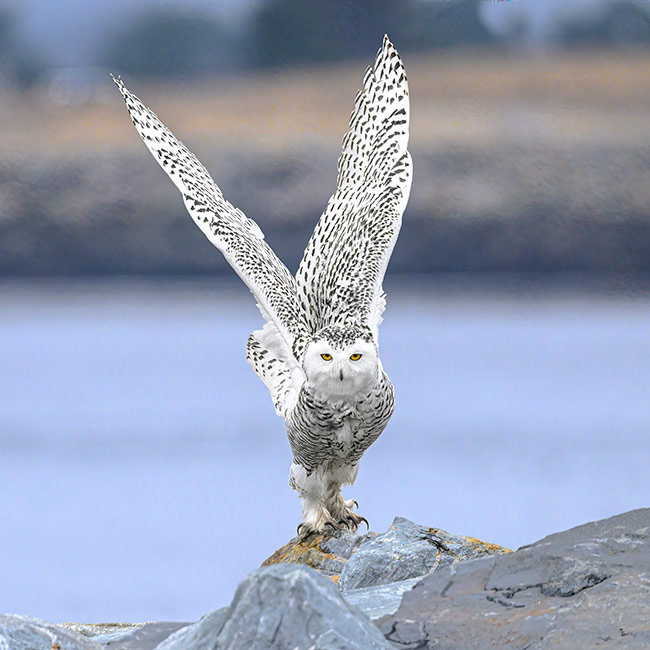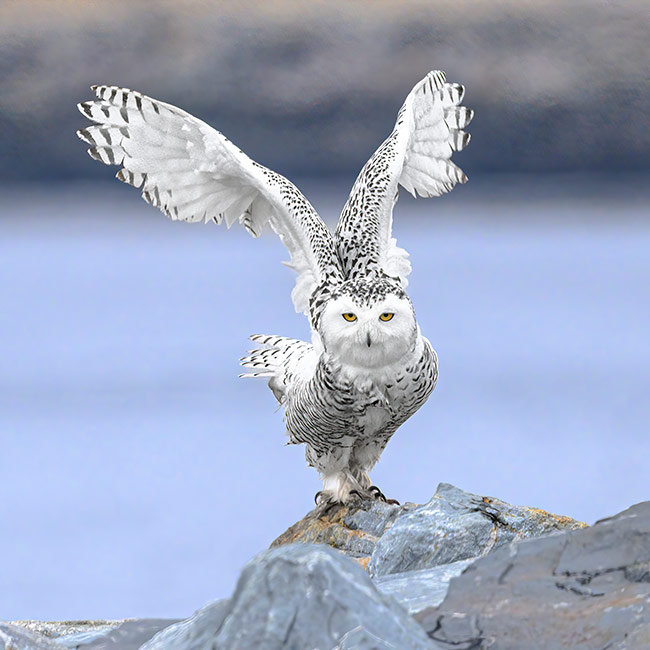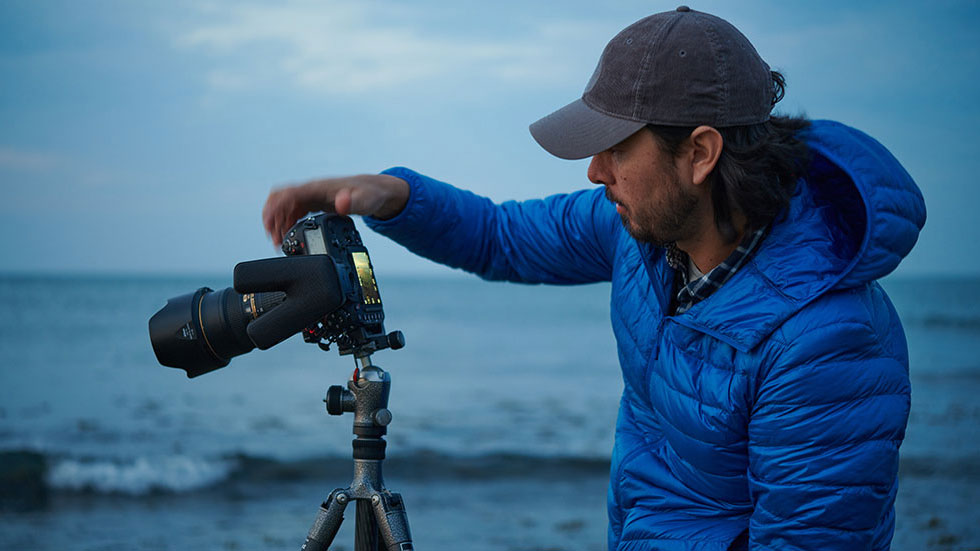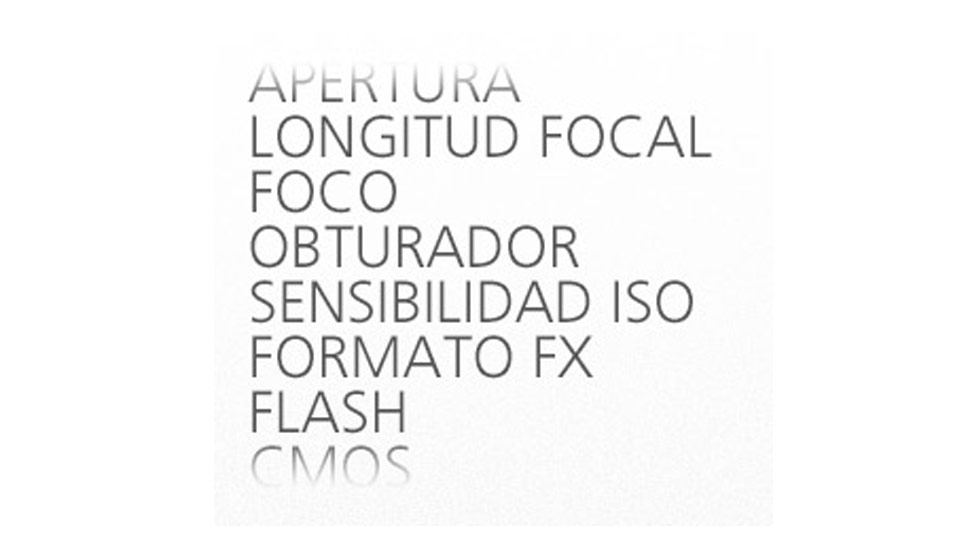Practical Magic: How the Z 9 Delivers Stunning Wildlife Photos
Light, compact, mobile and hand-holdable, the 500mm f/5.6 telephoto was a perfect choice for the snowy owl photos. “You need the reach of a telephoto,” Gillian says. “You aren’t going to get close to an owl—and you shouldn’t try.” All sequence images: Z 9, AF-S NIKKOR 500mm f/5.6E PF ED VR, Mount Adapter FTZ II, 1/2000 second, f/6.3, ISO 1100, aperture-priority exposure, highlight-weighted metering.
The photographs are extraordinary: a sequence of 28 frames of a snowy owl, shot by Gillian Overholser with the Z 9 and the AF-S NIKKOR 500mm f/5.6E PF ED VR, at 20 frames per second, with the owl coming straight at her—every frame of the 1.4-second-burst sharp, every frame revealing details of the bird’s flight, details that are evident in the six images we chose to feature from the sequence.
These aren’t video captures. They’re 28 still photographs, taken in 1.4 seconds with the Z 9 set at 20 frames-per-second. “It’s an amazing camera,” Gillian says, “the best, I think, that’s out there.”
We’d like to emphasize “coming straight at her” because…well, let’s just say that’s a tough situation for many cameras to handle. “Often times you shoot away and you pray that three [frames] are in focus,” is how Gillian puts it. “Here, every shot is in focus, and every one is dramatically different from the next—28 different poses, all those wing formations, all the details, in less than a second and a half. I couldn’t have gotten all those poses with any other camera. The Z 9 is magical, especially for someone who’s been photographing wildlife.”
Truth is, we like to hear the Z 9 referred to as magical, in that it makes possible remarkable, one-of-a kind photographs and revealing sequences that weren’t previously possible.
If you’re just starting out, getting an image of a bird sitting on a branch is an accomplishment. But pretty soon it’s time to move on to creative composition, background considerations, birds doing something interesting in picturesque settings, and then birds on the move, in the air and, if you’re lucky, coming your way.
How It’s Done
“My Instagram went viral,” Gillian says of the response when she posted a set of about a dozen images from the sequence. “I got 58,000 likes and a million looks. People asked how I did it.”
In most cases for her wildlife photography, she does it using animal-eye recognition and single-point AF to lock onto the subject’s eye. “That’ll make sure I grab the animal; it’s the quickest acquire-the-animal mode, in my experience.” Then she’ll press and hold the AF On button (the back button), which she’s programmed for wide-area AF, to start tracking the eye. “Those are the settings I find most effective for what I do,” she says. But for the snowy owl photos, she varied the method. “I used wide-area right away. I didn’t need single-point to acquire the bird because I had it isolated right at the start, so it was wide-area, start to finish.”
But camera settings aren’t anywhere near the whole story. As extraordinary as the Z 9 is, it’s the skill, judgment and experience of the photographer that enables the camera to perform at the level it’s capable of.
“All those wing shapes the owl showed me—not all birds do that,” Gillian says. If you’re after peak moments, research into the behaviors of local birds plus patience and persistence will give you the edge.
The Z 9 is magical…28 different poses…in less than a second and a half…every shot in focus, every one dramatically different….I couldn’t have gotten all those poses with any other camera...
Owls, in general, aren’t the easiest birds to photograph. “First thing, they’re very well camouflaged. And generally they sleep during the day. Snowy owls, though, hunt both day and night.” The best way to start is by finding out what kinds of owls are in your area.
Gillian started some seven years ago with photography of backyard birds—there were plenty of them, as she lived next to a nature reserve. “I was fascinated by their behavior and personalities,” she says. “I tried to take pictures of what I was seeing, and, frankly, at the beginning, I was terrible. There were so many things I didn’t know.” But she stayed with it, learning as she went. “The more experience you have, the better you get, and the thing about learning is that you have to be aware to learn—aware that you are storing up knowledge for future photographs.”
And there’s an app that will help. “It’s called Merlin, from Cornell Ornithology,” Gillian says, “and it’s sort of like Shazam for birdcalls.” The app will hear the sound, and in the case of owls, tell you if it’s a snowy owl, barn owl, great horned owl, screech owl or any other owl.
A large part of that knowledge involved concern and respect for wildlife.
“Every animal, every situation, is different,” Gillian says, “but the rule for wildlife photography is if the animal starts doing anything different than it was doing before—starts looking around, shifting, looking uncomfortable— you’re too close. To have no impact, you have to realize that every animal has a different tolerance for humans. The experienced wildlife photographer knows how far back you need to be so the animals remain comfortable and natural, doing what they do without being bothered. Basically, your goal is not to bother them.”
Having respect and concern for the animal isn’t just the right way to go, it’s also the smart way: you’ll get better pictures—natural attitudes, gestures, personalities. Maybe even a snowy owl coming straight to you, and with the Z 9 at 20 frames per second, you’ll be able to confidently take your best shots.
“The owl in these pictures was resting on a public beach,” Gillian says. “People were going by with their dogs, and it was looking at them like, Yeah, so what? So this owl was different—it wasn’t shy; it came toward me.”



